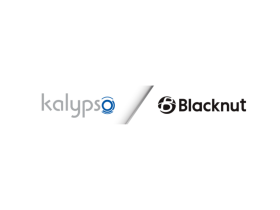General Atomics Aeronautical Systems, Inc. (GA-ASI), in partnership with cybersecurity firm Shift5, unveiled significant updates to the MQ-9A Reaper remotely piloted aircraft on May 9, 2024. These upgrades aim to fortify the aircraft’s defenses against evolving cyber threats and enhance its survivability in contested airspaces.
The MQ-9A Reaper, a cornerstone of unmanned aerial operations for the U.S. and its allies, will now integrate new capabilities, including Shift5’s onboard cyber anomaly detection and predictive maintenance technologies. These systems are specifically engineered to shield the aircraft from potential cyber-attacks that could compromise mission data or operational functionality. Given the escalating reliance on remotely piloted systems in military operations, addressing cybersecurity vulnerabilities is of paramount importance.
Originally introduced in 2001 and funded by GA-ASI, the MQ-9A has undergone significant development based on insights gleaned from the company’s Predator RPA, marking a substantial evolution in performance and reliability. Adopted by several national air forces and agencies, including the U.S. Air Force, the MQ-9A boasts a Honeywell TPE331-10 turboprop engine, enhanced with Digital Electronic Engine Control (DEEC) for improved performance and fuel efficiency, particularly at lower altitudes.
The MQ-9A’s triple-redundant avionic systems and fault-tolerant flight control system are meticulously designed to meet, and even exceed, the reliability standards of manned aircraft. With a payload capacity of 3,850 pounds and advanced sensors like Electro-optical/Infrared (EO/IR) systems, Lynx® Multi-mode Radar, and multi-mode maritime surveillance radar, the MQ-9A can carry a diverse array of weapons and sensors. It offers unparalleled operational flexibility with over 27 hours of endurance, speeds of 240 KTAS, and an operational ceiling of up to 50,000 feet.
Furthermore, the MQ-9A’s capabilities are further augmented with the introduction of the Extended Range (ER) variant, incorporating upgrades such as wing-borne fuel pods and reinforced landing gear, extending its endurance from 27 to 34 hours. This continual enhancement ensures that the MQ-9A remains an indispensable asset for persistent surveillance and strike missions, adeptly adapting to the evolving needs of its operators.
In addition to these updates, the development of a new Airborne Battlespace Awareness and Defense (ABAD) pod aims to equip the MQ-9A with advanced sensory capabilities to detect and counter anti-aircraft and missile threats. Collaboratively developed by GA-ASI and Shift5, this initiative addresses critical needs identified by the United States Special Operations Command (USSOCOM) and the Air Force Special Operations Command (AFSOC).
The partnership between GA-ASI and Shift5 leverages the latter’s cybersecurity expertise, initially cultivated by veterans of the U.S. Army Cyber Command. The Shift5 platform furnishes comprehensive operational data and cybersecurity insights, empowering operators to swiftly transition from data analysis to decisive action.
These enhancements to the MQ-9 Reaper underscore the unwavering commitment to adapting U.S. and allied defense strategies to confront both traditional and emerging threats. As unmanned systems continue to play an instrumental role in military operations, ensuring their resilience against cyber attacks and physical threats remains paramount to maintaining operational effectiveness and safeguarding critical military assets.
Source: armyrecognition.com

















Got a Questions?
Find us on Socials or Contact us and we’ll get back to you as soon as possible.